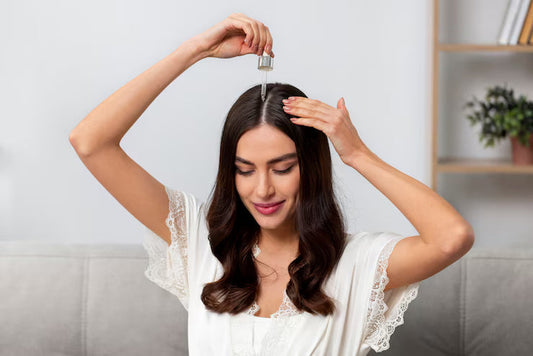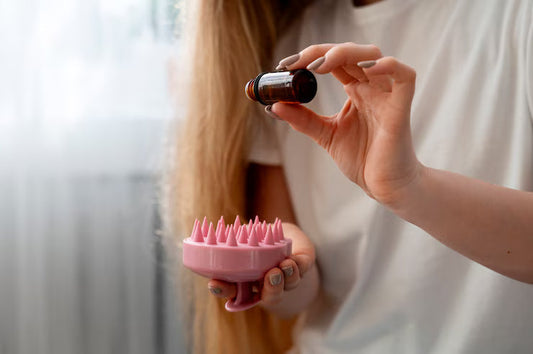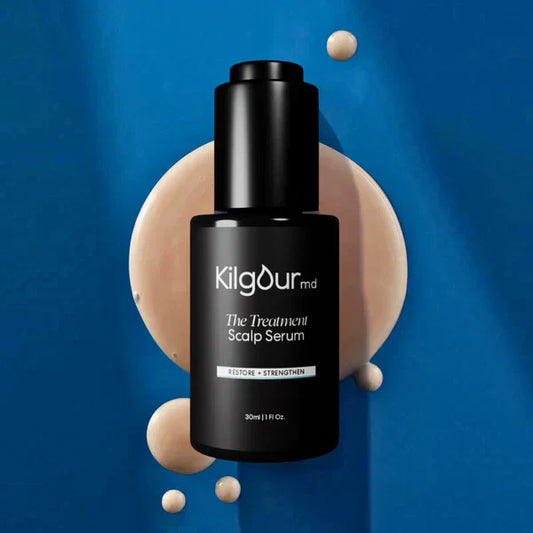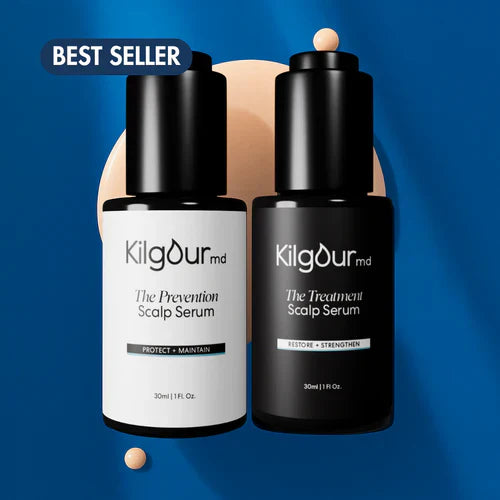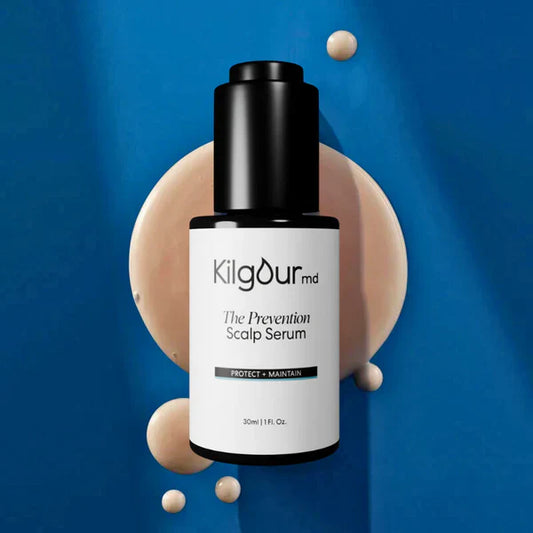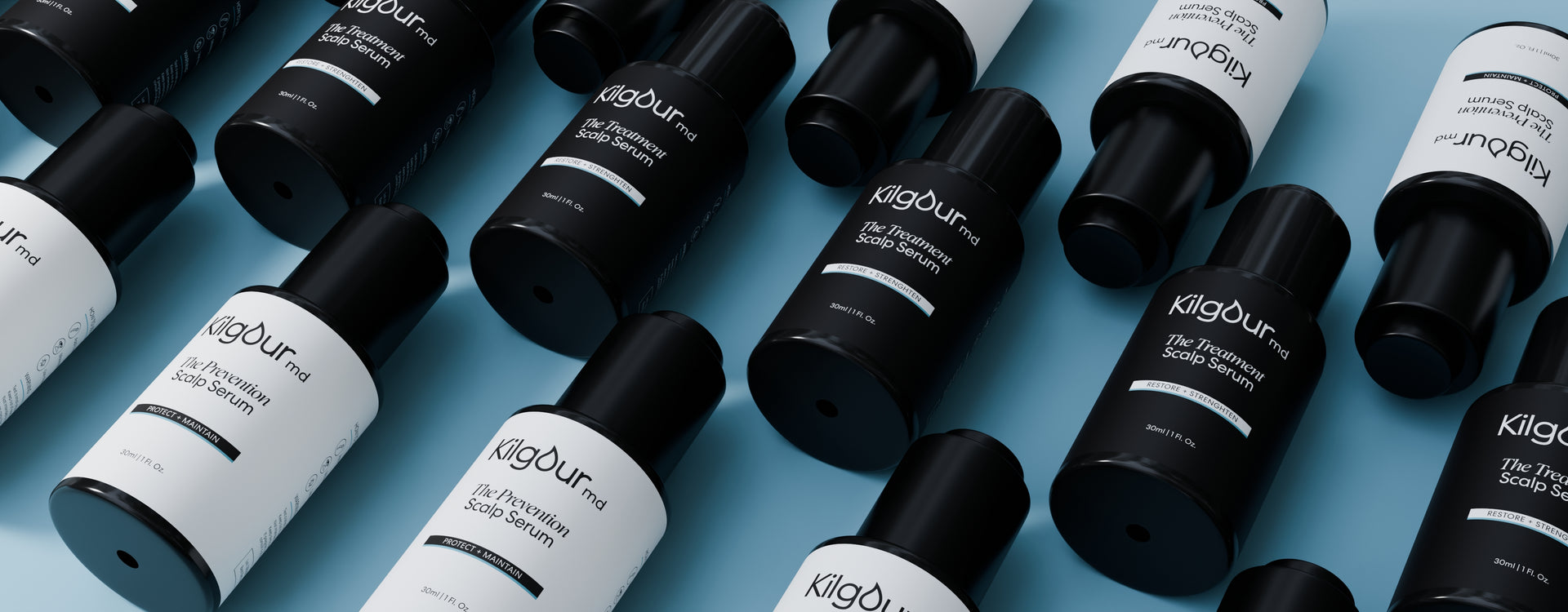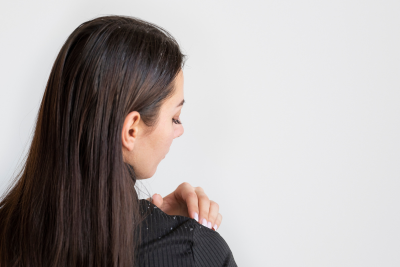
Everything you need to know about dandruff, according to a dermatologist
Dandruff on your mind? It's such a common scalp health problem - but thankfully, our in house dermatologist is here to answer your questions!
What causes dandruff, and how can it contribute to hair thinning?
Dandruff, known by its medical name seborrheic dermatitis, is caused by an inflammatory reaction to Malessezia, which is a normal fungus that is part of our skin flora on the scalp. In some people, it causes an inflammatory reaction leading to dandruff, itching and redness. But even if you don't see those signs of inflammation, Malessezia can still contribute to low-level "inflammageing" of the scalp, which over time can contribute to hair loss.
What are the signs of dandruff?
Typical signs of dandruff include greasy white scale (particularly noticeable if you wear a dark-coloured shirt!), itchiness, and redness. Dandruff doesn't just affect the scalp - other common places include behind and within the ears, around the folds of the nose, the eyebrows, and in some cases, the chest, armpits and groin can also be affected.
Dandruff, or dry scalp?
A dry scalp is much like dry skin, whereas dandruff is more like a rash. While a dry scalp may be mildly itchy and can flake, dandruff tends to be more inflammatory, and therefore the itch is worse with much more flaky scale and redness. Scalp psoriasis can also present very similarly to dandruff, so if in doubt, always consult with a dermatologist for their expert opinion.
How can you treat dandruff?
Dandruff can be treated with both over-the-counter and prescription medicated shampoos. For really ramped-up dandruff, a mild topical steroid solution to calm down the inflammation might be needed, but this requires consultation with a physician.
What should you look out for in a dandruff shampoo?
I prescribe prescription strength 2% ketoconazole shampoo all the time to my patients. I prefer the prescription strength because it doesn't contain fragrance which can also be irritating, but a 1% over-the-counter version is also available. Other ingredients to look for in shampoos include zinc pyrithione, piroctone olamine (found in The Prevention scalp serum by KilgourMD!) and selenium sulfide. To help get rid of the scale that builds up, a shampoo containing Salicylic Acid works as a great gentle scalp exfoliant.
How often should you use dandruff shampoo?
I recommend incorporating an anti-dandruff shampoo such as ketoconazole into your regimen two or three times per week initially for intensive treatment, decreasing down to once a week for maintenance. The most important step to ensure optimal results is to lather and leave the shampoo in place for at least five minutes before washing off.
How long does it take for dandruff shampoo to work?
Typically results should be expected within just one treatment, especially when using prescription-strength ketoconazole, provided you leave the shampoo on for long enough before rinsing.

